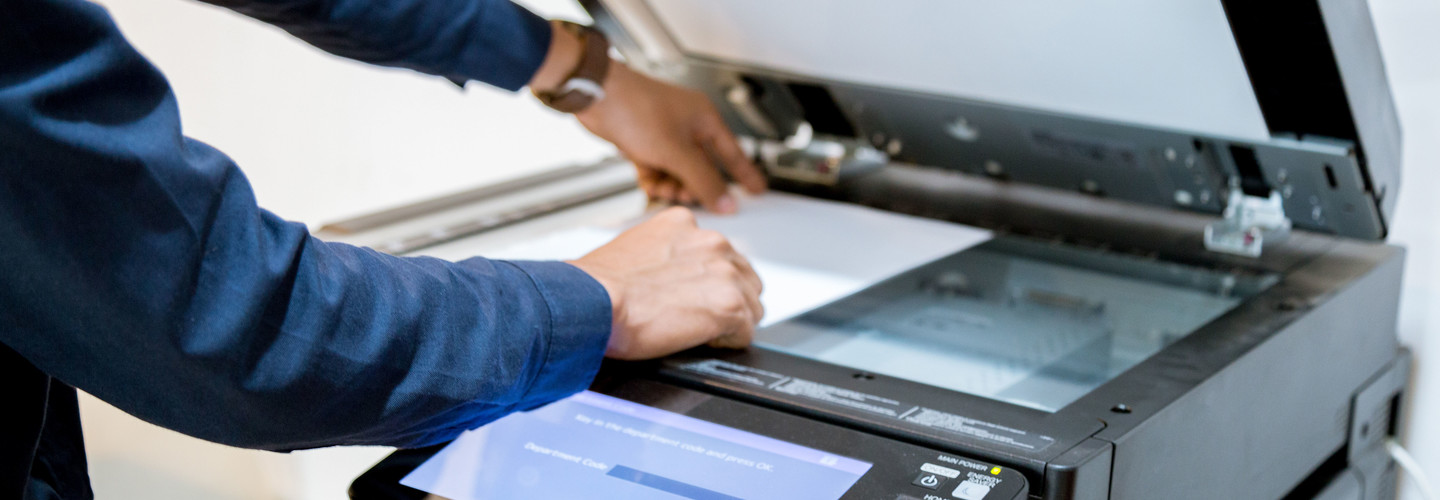Healthcare systems are also learning how to manage workflow with so many administrative employees still working from home.
“Sharing patient information electronically among hospitals has been a huge focus for our customers,” says Tracey Koziol, senior vice president of global offerings solutions at Xerox.
Offerings like Xerox ConnectKey help healthcare systems adapt to this new way of working. The solution enables employees to not only optimize and manage print devices remotely, but also securely manage, print, scan and share files, no matter their location.
Print Services Adapt to a New Normal
As states begin to reopen, healthcare organizations are preparing for the new reality of what work will be like, especially in nonpatient areas.
“For the comfort of workers going back, the question is: Are they really going to be comfortable with 50 to 100 people all going to one large, centralized A3 device?” Burnett says. “Organizations may start to say, ‘Maybe we need to have multiple printers throughout the organization that maybe five or 10 people are using.’”
While increasing the number of print devices or using smartphone applications can certainly help eliminate touchpoints in physical healthcare settings, IT teams are heavily focused on longer term work from home print solutions.
In the initial COVID-19 response, Burnett says that some hospitals told employees to simply go out and buy what they needed, reimbursing them for the costs.
While that might have provided an immediate solution, “IT managers are still responsible for infrastructure,” says Burnett. “There’s still security risks and expenses. They may want to have a better-value product sitting there at that user’s home that’s going to be more cost-effective for that organization.”
It also makes more sense from a help desk standpoint. “How do they support 50 different models as opposed to maybe two in their entire fleet?” he adds.
Vendors are starting to introduce ready-to-ship bundles that make setting up that remote workspace easier. For example, Xerox has “ready to work” packages that include computers and laptops, printers, asset tagging, remote support and easy repair.
The reality is that work will look different than before, says Koziol: “You’ve got to be able to build and maintain a very safe, right, secure but distributed and virtual work environment. IT teams have got to think about that.”
Even in the best of times, printers can be a concern for IT departments. >>> Here are three ways to simplify things.










